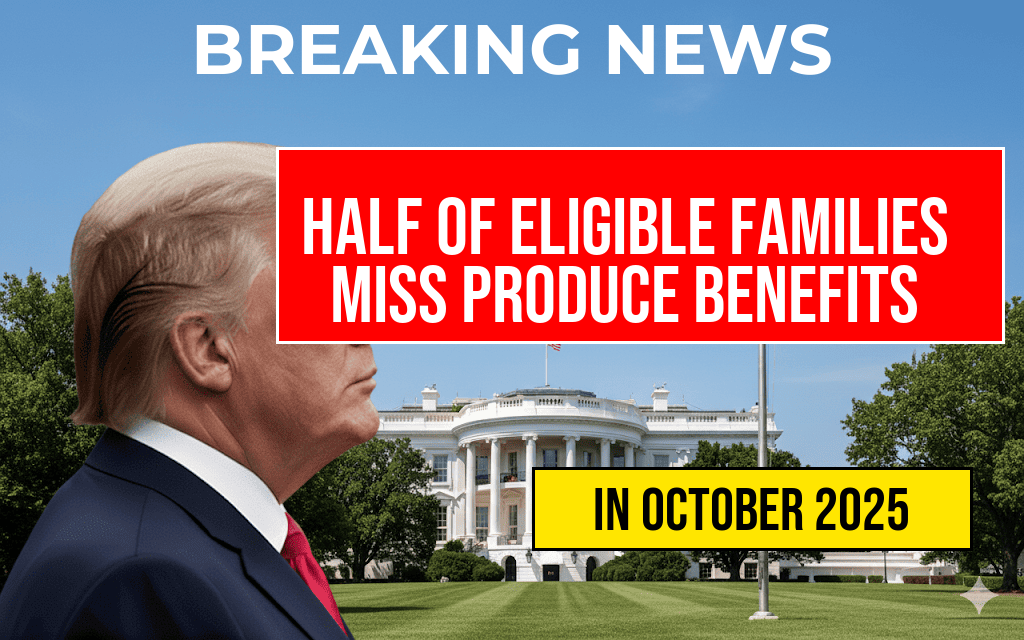Nearly half of eligible families are missing out on vital benefits through the Women, Infants, and Children (WIC) program, according to recent data. Despite WIC’s proven effectiveness in improving nutrition and health outcomes for low-income pregnant women, new research indicates that approximately 50% of families who qualify for the program are not enrolled. This gap results in these families losing between $312 and $936 annually in additional produce benefits alone, which could significantly impact child health and food security. Experts warn that barriers such as limited outreach, administrative hurdles, and lack of awareness are fueling this disparity, leaving many children and parents without access to vital nutritional support. As policymakers consider expanding program outreach, understanding the scope and causes of under-enrollment becomes critical to ensuring equitable access to nutritious foods across all communities.
WIC’s Role in Supporting Child Nutrition
The WIC program, established in 1972, serves as a cornerstone of federal efforts to improve nutrition among pregnant women, new mothers, infants, and young children. Participants receive supplemental foods, nutrition education, and healthcare referrals, with a focus on fostering healthy development. One of the program’s key components is providing benefits specifically for fruits and vegetables, which research links to improved health outcomes, including reduced risk of obesity and chronic diseases later in life.
According to the Wikipedia entry on WIC, the program currently reaches approximately 50% of eligible families nationwide. While this participation rate has remained relatively stable, it leaves a substantial segment of vulnerable populations unserved. The benefits for produce alone can amount to hundreds of dollars annually per family, underscoring the importance of wider access.
Disparities in Enrollment: Who Is Left Behind?
Data from recent analyses highlight persistent disparities in WIC enrollment, particularly among minority communities, rural populations, and immigrant families. A report from the U.S. Department of Agriculture (USDA) reveals that eligible Hispanic and Black families are significantly less likely to participate compared to their white counterparts, often due to language barriers, transportation issues, and lack of awareness about program eligibility.
| Family Demographic | Average Annual Benefit Loss | Potential Benefits per Family |
|---|---|---|
| All eligible families | $312 – $936 | $312 – $936 |
| Hispanic families | Higher likelihood of under-enrollment | Up to $936 |
| Rural families | Significant participation gap | Varies, often below $500 |
Barriers to Enrollment and Program Awareness
Administrative Challenges
Many eligible families face complex application procedures that deter participation. The process often involves multiple visits to clinics, detailed documentation, and language-specific forms, which can be intimidating or inaccessible for non-English speakers and those with limited transportation options.
Lack of Outreach and Education
Community outreach efforts vary widely across regions, with some areas lacking targeted campaigns to inform families about available benefits. Without proactive engagement, families may remain unaware of their eligibility or the tangible benefits, including the valuable produce vouchers that can supplement their diets by hundreds of dollars annually.
Policy Initiatives and Future Outlook
Recognizing these gaps, several state and federal initiatives aim to streamline enrollment and expand outreach. Recent proposals include simplifying application processes, increasing bilingual materials, and leveraging technology to reach underserved populations more effectively. The USDA has also emphasized the importance of integrating WIC services with broader healthcare systems to improve access and awareness.
Researchers and advocacy groups continue to push for policies that address structural barriers, emphasizing that expanding enrollment is not merely a matter of increasing participation metrics but a crucial step toward reducing health disparities and promoting equitable access to nutritious foods. As the nation grapples with rising food insecurity, particularly among low-income families, ensuring that eligible families receive full benefits remains a priority.
Impacts on Child Development and Public Health
Access to adequate nutrition during early childhood is critical for cognitive development, immune function, and long-term health. Missing out on benefits like free produce hampers efforts to combat childhood obesity and malnutrition. Studies indicate that children in families receiving WIC benefits demonstrate better dietary habits and health outcomes than those without access.
According to CDC nutrition guidelines, increasing fruit and vegetable consumption is associated with lower risks of chronic diseases later in life, making equitable access to these benefits a public health priority.
Moving Toward Greater Equity
Addressing enrollment disparities requires a coordinated approach involving policymakers, healthcare providers, community organizations, and families. Efforts to reduce administrative hurdles, enhance outreach, and tailor programs to meet the needs of diverse populations could significantly narrow the participation gap. As the federal government considers future budget allocations and policy reforms, prioritizing equitable access to nutrition benefits stands out as a critical step to support vulnerable families and promote healthier communities.
Frequently Asked Questions
What is the main issue highlighted in the article regarding WIC enrollment?
The article highlights that WIC enrollment disparities leave about half of eligible families uncovered, preventing many from accessing vital produce benefits.
How much in annual benefits are eligible families missing out on due to enrollment gaps?
Eligible families are missing out on between $312 to $936 annually in produce benefits because of low enrollment rates.
What are some reasons for the disparities in WIC enrollment among eligible families?
Disparities may stem from factors such as lack of awareness, limited access to enrollment assistance, language barriers, and logistical challenges in completing the application process.
How can increasing WIC enrollment impact eligible families and their nutrition?
By increasing WIC enrollment, more eligible families can access nutritious produce benefits, which can improve overall health and nutrition outcomes for children and families.
What strategies are recommended to reduce WIC enrollment disparities?
Strategies include expanding outreach and education efforts, simplifying the enrollment process, providing multilingual support, and improving access to enrollment services to ensure more eligible families benefit from WIC programs.






